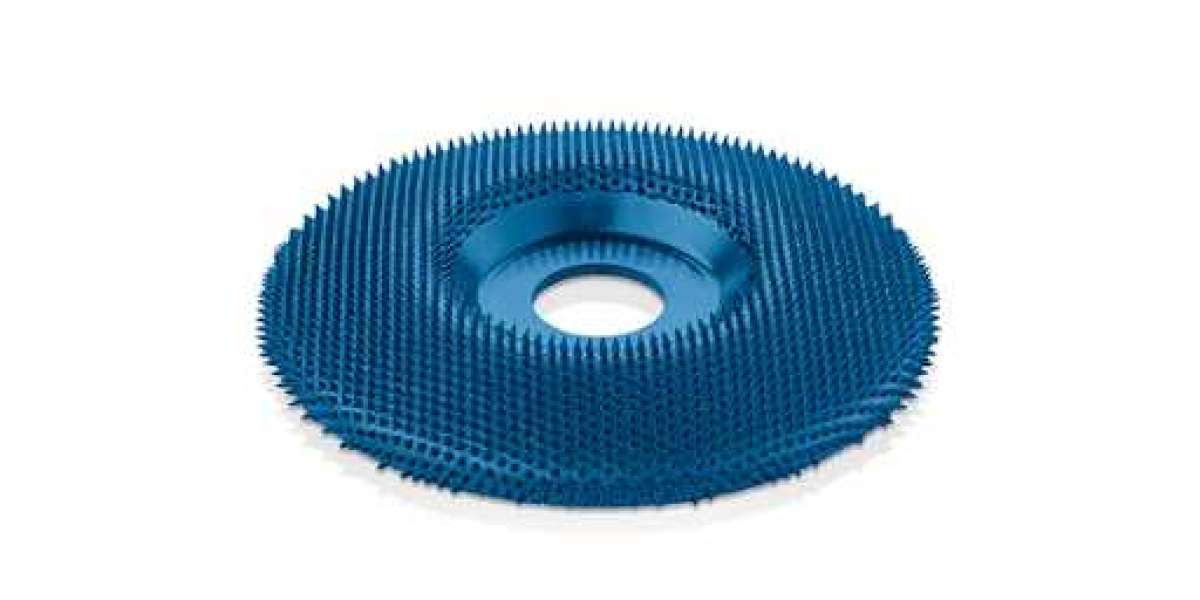When it comes to achieving a smooth finish or shaping materials, grinder sander discs are essential tools for professionals and DIY enthusiasts. Whether you're working with wood, metal, or plastic, choosing the right sander disc can significantly affect your project's outcome. This guide will walk you through the various types of grinder sander discs, their applications, and how to select the best one for your needs.
Understanding Sander Discs for Grinders
Before diving into the different types of discs available, it’s essential to understand what a sander disc for grinder is and how it works. These discs attach to an angle grinder or a disc sander, allowing you to sand, polish, or smooth surfaces quickly and efficiently. By rotating at high speeds, they remove excess material and help achieve the desired finish on various surfaces.
Types of Sander Discs
Not all grinder discs are created equal. Each type serves a specific purpose, and selecting the right one is crucial for achieving the best results. Below are the most common types of grinder sander discs:
1. Sanding Discs
Sanding discs are the most versatile option available. These discs come in various grit levels, allowing you to choose the right one for your project. Lower grit numbers (40 to 60) are more aggressive and suitable for removing material quickly, while higher grit numbers (120 to 400) are designed for finer finishing tasks.
For woodworking projects, a wood grinder disc with medium grit (80 to 120) is ideal for shaping and finishing tasks. Metal projects, on the other hand, might require lower grit levels to remove rust or paint before polishing.
2. Flap Discs
Flap discs are a combination of sanding discs and grinding wheels, making them a go-to option for many users. They have overlapping abrasive flaps that offer both material removal and finishing in one step. They are durable and can be used for a variety of applications, from smoothing weld seams to finishing wood surfaces.
The versatility of flap discs makes them an excellent choice for users who need a single disc for multiple tasks. While they are primarily used on metal, they are also highly effective on wood and plastic.
3. Grinding Discs
As the name suggests, grinding discs are designed for aggressive material removal. These grinder sander discs are perfect for shaping hard materials such as metal, stone, and concrete. However, they are not ideal for finishing tasks since they tend to leave a rough surface.
If your project involves removing large amounts of material quickly, a grinding disc will serve you well. Just be sure to switch to a finer sander disc for grinder when it’s time to smooth or finish the surface.
4. Polishing Discs
Polishing discs are designed to bring a high shine to materials like metal, stone, and even plastic. They are typically used after all material removal and sanding processes have been completed. These discs come with finer abrasives or soft materials like wool, and they are often used in conjunction with polishing compounds.
For projects involving intricate finishes, polishing discs will help you achieve a professional-looking shine, whether on metal or wood.
How to Choose the Right Sander Disc for Grinder
Now that you know the different types of grinder sander discs, it’s time to determine which one is right for your specific project. Below are key factors to consider:
1. Material
The material you're working with will largely dictate which grinder discs you should use. For example, metal projects require more aggressive discs like grinding or flap discs, while woodworking often calls for sanding discs with higher grit levels. If you're working with multiple materials, you may need more than one type of disc to get the job done effectively.
2. Grit Level
Grit level refers to the coarseness of the disc, and it plays a significant role in how much material is removed and how smooth the finish is. Coarse grit (40 to 60) is great for rapid material removal, while finer grits (120 and above) are best for finishing. It’s a good idea to have a range of grit levels on hand so you can switch as needed during different stages of your project.
3. Disc Size
The size of the disc is another important consideration. Standard grinder sander discs come in sizes ranging from 4.5 inches to 9 inches. Smaller discs offer greater control, making them ideal for precision work, while larger discs cover more surface area, which is useful for bigger projects. Make sure the disc size matches your grinder’s specifications to avoid issues during operation.
4. Durability
Durability is especially important if you plan to use the disc frequently or for heavy-duty projects. Flap discs and grinding discs are typically more durable and can handle tougher tasks. Conversely, sanding discs with higher grits may wear out faster, especially when used on rough materials like metal.
5. Cost
While cost shouldn't be your only deciding factor, it's important to choose a disc that offers good value for the price. Higher-quality discs tend to last longer and provide better results, so consider investing in a reputable brand if you use your grinder often. However, for light, occasional use, lower-cost options may suffice.
Safety Tips for Using Sander Discs
Working with a sander disc for a grinder can be risky if proper safety measures aren’t followed. To ensure a safe and efficient working environment, adhere to the following safety guidelines:
- Wear Protective Gear: Always wear eye protection, gloves, and a dust mask when working with grinders to protect yourself from debris and dust.
- Check Disc Compatibility: Make sure the disc you choose is compatible with your grinder, particularly in terms of speed rating and size.
- Inspect the Disc Before Use: Always inspect your discs for any signs of damage before attaching them to the grinder. Cracked or damaged discs should be discarded to avoid accidents.
- Secure the Material: Ensure the material you're working on is securely fastened to avoid slips and ensure precision.
Conclusion
Choosing the right sander disc for grinder can make all the difference in your project's success. By understanding the various types of grinder sander discs and considering factors like material, grit level, and disc size, you can select the perfect disc for your needs. Whether you’re sanding wood, polishing metal, or shaping stone, the right grinder disc will help you achieve professional results with ease.








